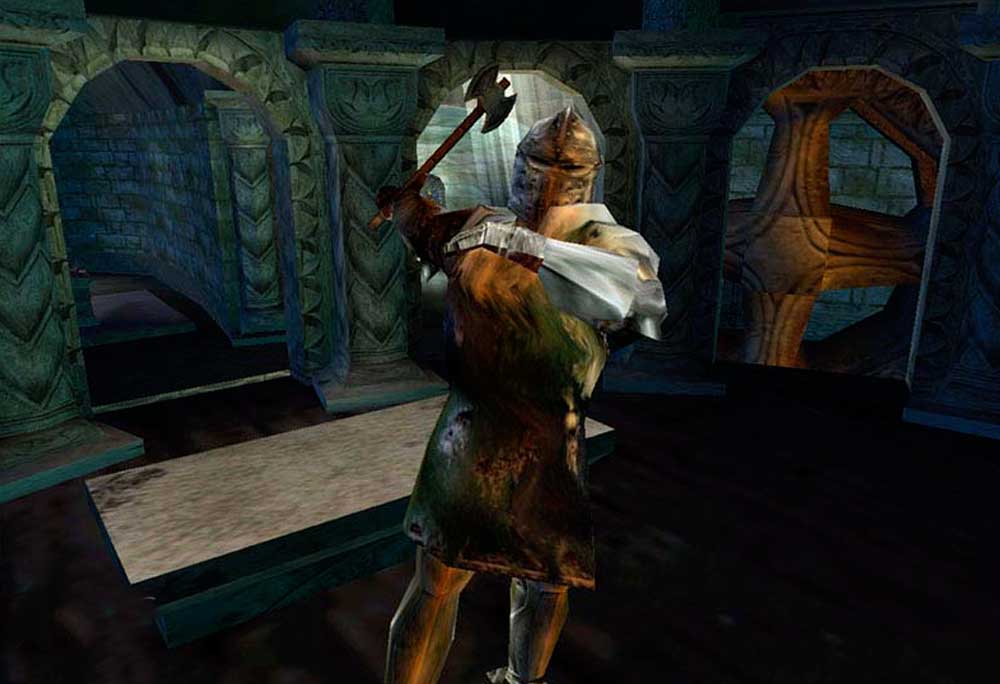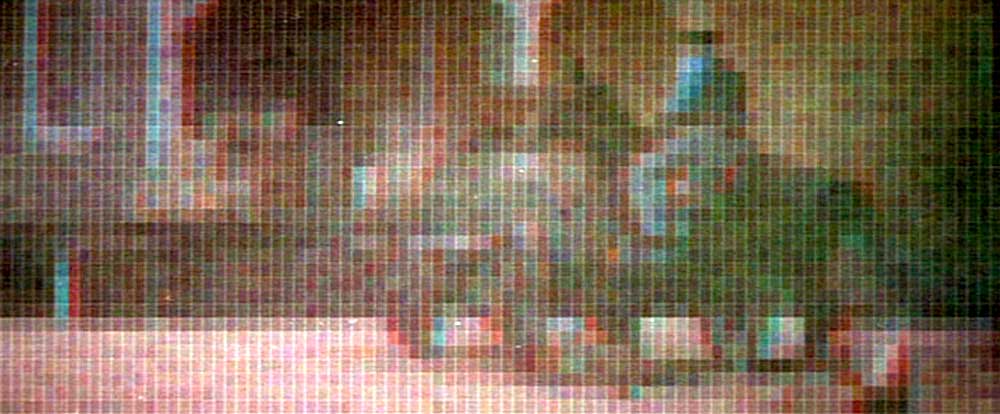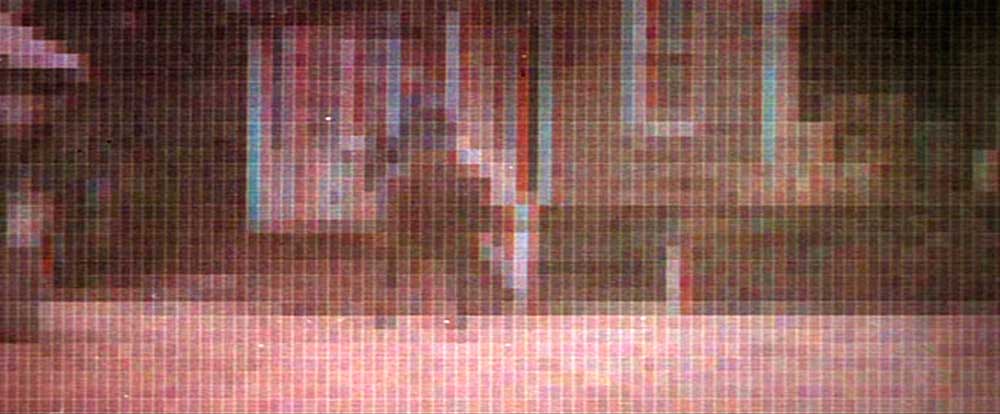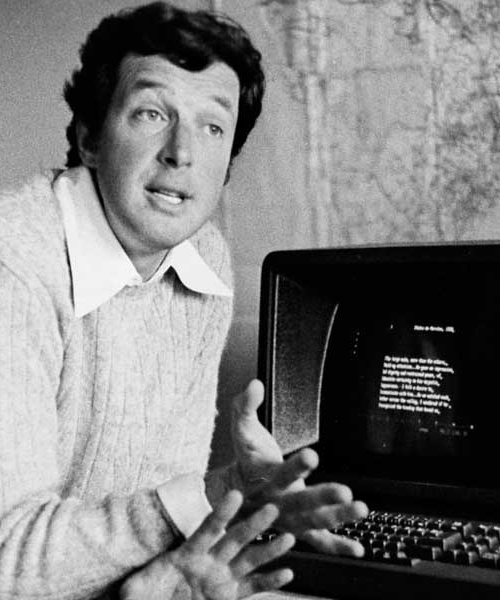

Spotlight on Michael Crichton’s Technological Developments
In His Own Words
I write on a computer. My father was a journalist and he believed nobody should write by hand. He sent all his kids to learn typing when they were 10. So, I have typed ever since 5th grade. I couldn’t possibly write longhand. It would be so SLOW. (I am a fast typist.)
My senior thesis was a study of ancient Egyptian racial history and I had the data analyzed by the computer. In those days you were not allowed to touch the machine yourself, but I had made up the punch cards for programming. Then, at Harvard Medical School, and at the Salk Institute, I used computers all the time in my research. But when I became a full-time writer I really didn’t have access to computers for a long time. In 1979, I got an Olivetti word-processor, and have been writing my books on it ever since. I find that it takes away all the mechanical problems of writing and allows you to concentrate on the quality of the prose.


Computer Love
In His Own Words
The first novel I pretended to write on a computer was The Andromeda Strain in 1969. It contained some diagrams that claimed to be computer-generated. Actually, I made the diagrams on an IBM Selectric typewriter with a computer-font ball, rolling the paper back and forth in the carriage until I got the image I wanted.
The first novel I actually wrote on a computer was Congo in 1979. I wrote it on a dedicated word processor, which was exotic technology in those days. My publishers were suspicious when they received my flawlessly clean typescript—and flawlessly clean revisions. They thought I was up to something. I was.
Next I bought an Apple II+, because I wanted to learn programming. I had started a company to make software for film pre-production, and I wanted to understand something of what programmers faced, so I popped in a language card, taught myself BASIC, and wrote some programs.
There followed an unhappy time with IBM PCs—I found the metal boxes forbidding, and difficult to work on. That ended when I bought one of those cute 512K Macs to fool around with at home. Two days later, the IBM was removed from my office, and the Mac installed there. I have written on Macs ever since.
Computer Generated Special Effects in Westworld
In Westworld, Michael Crichton was the first film director to use computer generated graphics as a movie special effect, marking this 1973 movie as the beginning of the development of motion picture CGI.
In His Own Words
The second problem was what we called the “gunslinger POV,” the machine view of the world. We reviewed standard special-effects techniques and rejected them all; they were too familiar, and shared a “filmic” quality — no matter how strange, they still looked like photographic images. I didn’t want that.
I knew it was possible to scan images with a computer, and then reconstitute those images in some other form. I didn’t know whether these techniques could be applied to motion picture film, but the idea seemed worth exploring. I also liked the idea that the machine world-view would be literally that — a series of pictures created by computer. Several experts told us that this was impossible. Finally we found a computer-graphics artist, John Whitney Jr., who said he could do it. Neither he or anyone else could be sure exactly how it would turn out, but we decided to go ahead and try it.
From “Behind the Scenes of Westworld” from American Cinematographer magazine, November 1973
“When I met Brent Sellstrom, the post-production supervisor of Westworld he had a problem — to find a technique to represent on film, the point of view of a machine. The script called for the audience to see the world as a robot gunfighter played by Yul Brynner saw it. This “robot POV” was supposed to consist of a series of animated colored rectangles. It could not be done by any know special effects technique. Something new was required.”
John Whitney, Jr., Westworld Visual Effects
“A word about the “Whitney footage”. Some of the scenes in Westworld required the gunslinger’s P.O.V. as seen through his ‘electronic eyes’. A chap by the name of John Whitney Jr. has devised an ingenious method of taking original camera footage and converting the image into a fascinating mosaic pattern of varying shapes and colors. The trick here is to provide original camera footage which contains sufficient “contrast” to produce a good computer facsimile. We made tests of certain key sequences to arrive at a contrast that would be suitable. For example. we had Richard Benjamin made up completely in white – white make-up, a white western wardrobe, complete with white gloves, and white hair spray. He looked as though he had fallen into a barrel of flour! But that is the kind of contrast that seemed to work best for us on this particular sequence. Other shots (exteriors) were put through the computer to achieve a similar effect. The visual effect really “set up the audience” for a believable robot gunslinger P.O.V.”
Gene Polito, Westworld Director of Photography
Amazon Video Game
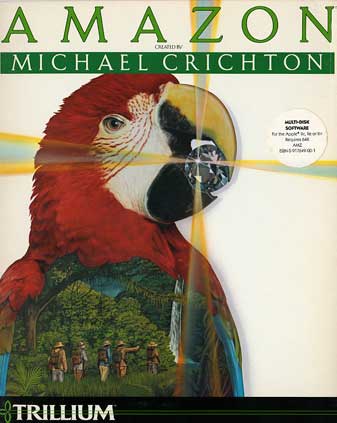

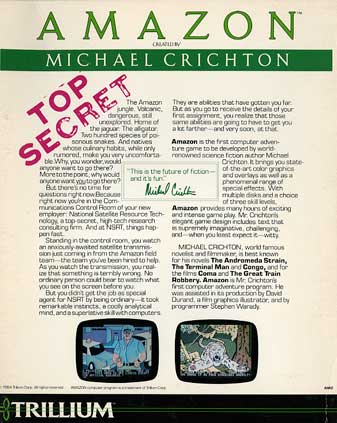

In His Own Words
Amazon was released in 1982 for the Apple II Computer—that’s seventeen years ago. It was ported to other computer platforms, and was quite successful in its day. And it was very innovative: we had animated sequences in the middle of an adventure game, which no one had ever done before. Amazon is also a good example of the kind of involvement I expect to have in Timeline. I was involved in every aspect. I not only wrote the basic game design, I even wrote some of the code for that game.
Michael Crichton created a computer game in the early 1980’s called Amazon. He and his two partners, programmer Stephen Warady and artist David Durand, developed this early computer game over the course of two years in the early 1980’s. Michael Crichton developed the story for the game and also did some of the programming. In 1983, Michael Crichton partnered with Spinnaker Software to distribute Amazon and create more games under the Trillium banner. Michael Crichton explains more about Amazon in this excerpt from a Jun 8, 1984 article in InfoWorld magazine called “Novelists Inspire Games: Science-fiction Authors Lend Their Talents to Interactive Fiction”:
From InfoWorld magazine:
“Crichton jumped in with more zeal than most. For the past year and a half, the noted doctor turned author and Hollywood director has devoted his energies to Amazon, a “computer novel” turned from flowchart to software.
“I thought this was a very interesting new form, which is not being used in the most interesting way at all. It’s being used in a very primitive way,” Crichton says. He attributes that to the fact that programmers, not authors, have created most of the exiting interactive fiction.
Amazon sends you to the jungles of South America to find a lost city and some hidden emeralds. Your sidekick is a talking parrot named Paco who offers tips and comic relief. Unlike previous computer novels, Amazon incorporates elements of arcade games, computer graphics and passages of straight text. “I wanted the game to change continuously,” Crichton says. “It requires the player to have the sort of inventiveness you would have to have if you’re on a real expedition. I’ve gone to remote parts of the world such as Pakistan and Nepal. I know what it’s like.” Crichton says he planned his game using techniques similar to those he uses when he directs movies.
Programming the I Ching
Michael Crichton published one of his first computer programs in the March 1983 issue of Creative Computing. In a forward to the article, the publishers say: “Crichton has turned his remarkable mind and energy in many directions–medicine, research, writing, filmmaking and, most recently toward personal computers. His approach to computerizing the prophecies of the I Ching presented here follow in this tradition of lookng at a fascinating subject in meticulous detail with a liberal dose of technology and imagination thrown in.”
In His Own Words
Although it is at least 3000 years old, the I Ching, a Chinese method of divination, employs what we would now call a binary technique. In its simplest form, three coins are tossed six times to create a six-line figure of broken and unbroken lines. This so-called hexagram is then interpreted by consulting the I Ching, or Book of Changes.
This Book is older than the Bible—tradition dates its origin to 1120 B.C., five hundred years before Confucius added his commentaries. Over the centuries the I Ching has been studied as religious text and a philosophical masterpiece. But the I Ching is also unquestionably a method for predicting the future and this aspect has recieved much attention during the twentieth century.
It is fundamental to the I Ching that the future can be understood in perpetually changing patterns of off/on, yes/no, heads/tails, broken/unbroken. This binary aspect suggests the ancient technique is highly appropriate for adaptation to a computer. One might say that the I Ching treats reality the same way a computer does.
This idea may horrify purists. Those who consider the methods of the I Ching sacred–properly conducted only with ritual, incense, meditation and the complex tossing of yarrow sticks–may find a computer a chilling perversion of ancient beliefs.
But in fact there is no agreement on what makes the system work. One modern expert, John Blofeld, while testifying to the power of the I Ching, denies any comprehension of how it works. Thus it is perfectly possible that a computer could cast the I Ching effectively.
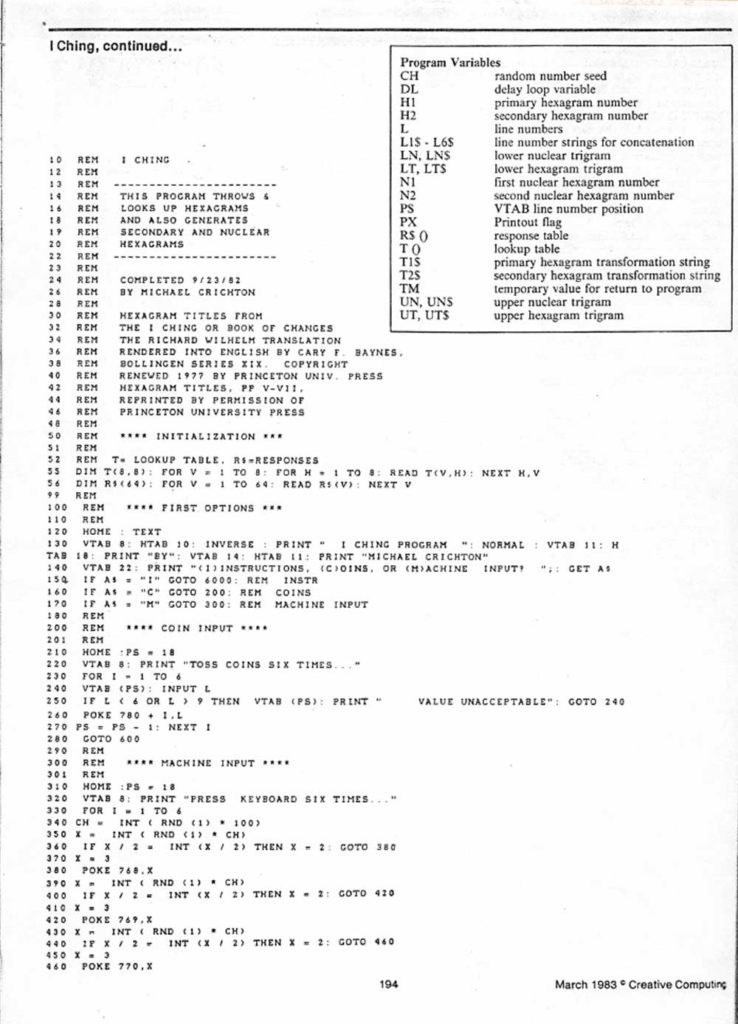

Movie Budgeting Software
Michael Crichton wrote a Movie Budgeting computer program to help simplify the process of forecasting the motion picture budgets for his films. It was so helpful that other movie and production companies started to ask to use it so he started a company called, Filmtrack, to sell his software.
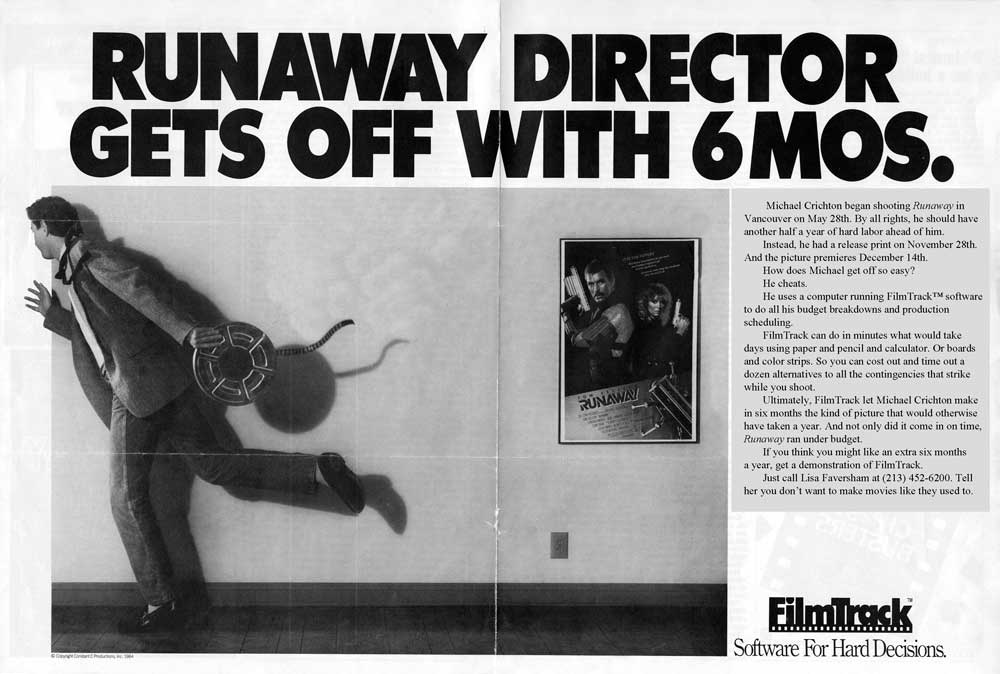

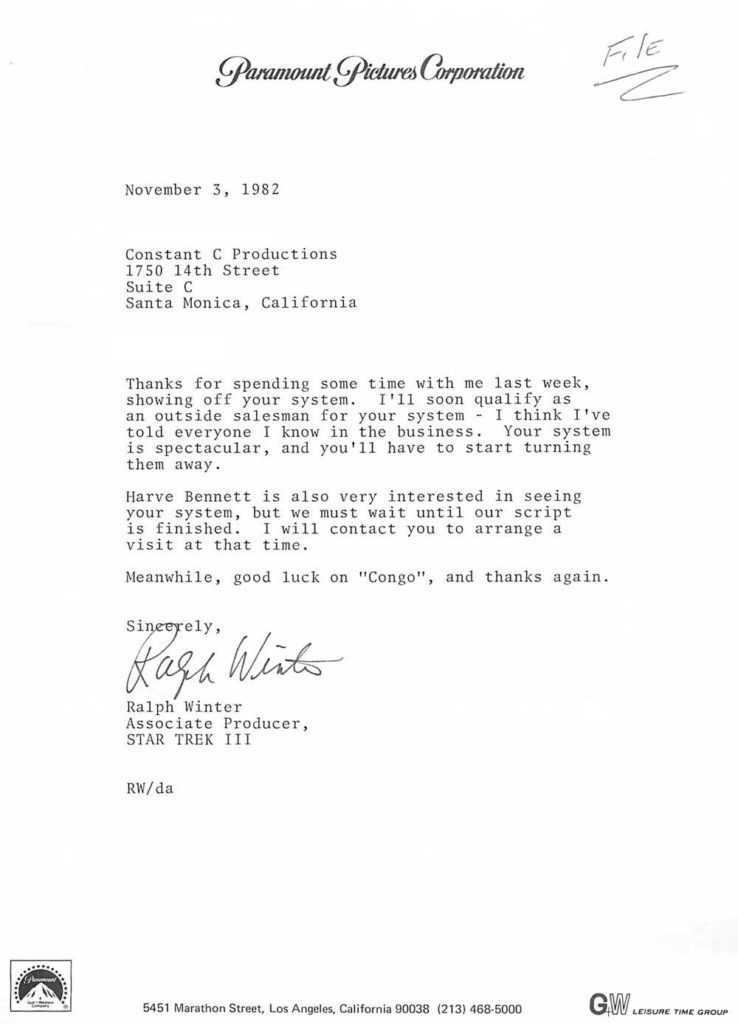

In His Own Words
Usually this [creating a movie budget] take days, sometimes weeks because producers are always changing their minds about locations, about the size of the crew, about the number of extras in this scene or that. Every little change in the production makes it necessary to refigure the budget. When you’re talking about a $30-million movie, things get really complicated. But with the program we’ve developed you feed in all of your data, the price of renting horses in say Saudi Arabia as opposed to Ireland, the cost of food on this location or that, and the machine prints out your budget in about five minutes. And then you can say, well, maybe not Arabia, maybe Central Park, and the machine refigures everything for your immediately. Other movie companies are now coming to us to we can run their budgets for them on our program.
In 1995, Michael Crichton, Jack C. Smith and Emil Safier were awarded a Technical Achievement Academy Award for “pioneering computerized motion picture budgeting and scheduling. The early work of these men demonstrated the practicality of motion picture budgeting and scheduling on small computers.” To learn more, check out our Awards and Accolades page
Timeline Computer Game
Michael Crichton started a video game company called “Timeline Studios” to create video games based on his books as well as other original video game ideas he had. The Timeline Video Game was based on his best-selling time travel novel, Timeline, and was released in 2000.
In His Own Words
I had wanted to start a game company for several years, and the time seemed right. We started it in March 1997, two years before the novel Timeline was published.
The company was created to make all sorts of games, and the first year was spent on the rendering engine and the authoring system. Then when I wrote the novel Timeline, which appeared two years later, we decided to make a game of that. It seemed like a good idea.
A lot of what I set out to accomplish proved surprisingly difficult. Sometimes the polygon budget sank us, sometimes the AI proved too difficult. But much of what we wanted, we got. It was hard work and fun. It was a steep learning curve for everyone, as I learned about games and the team learned about me.
